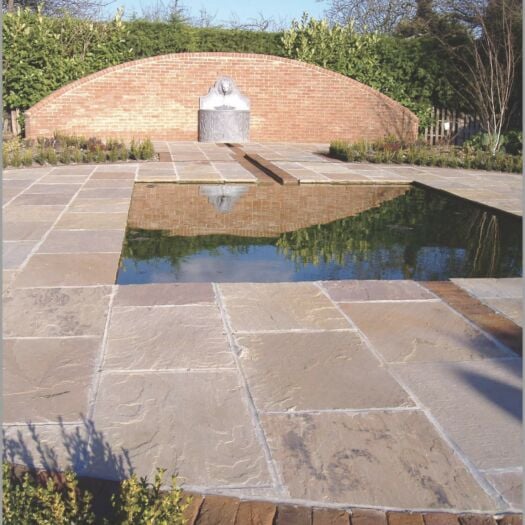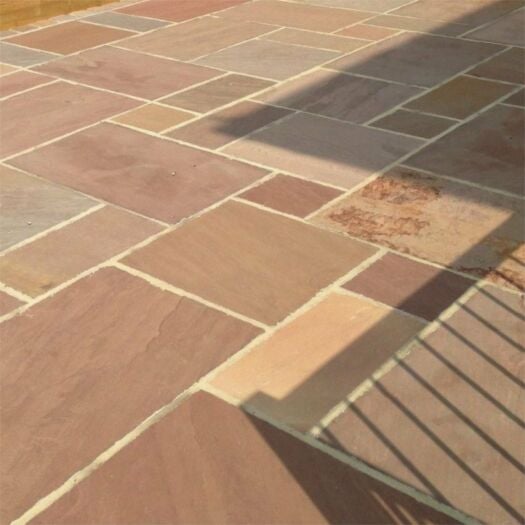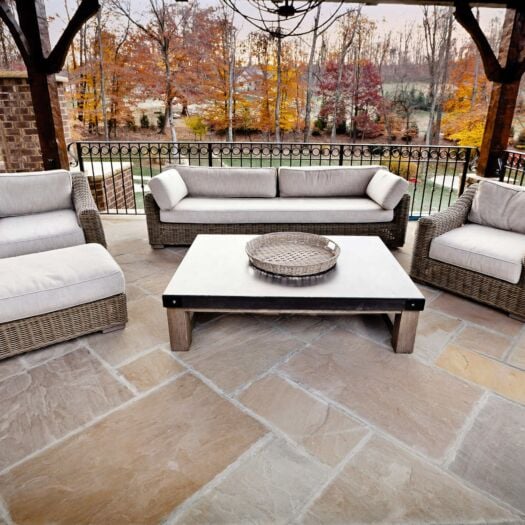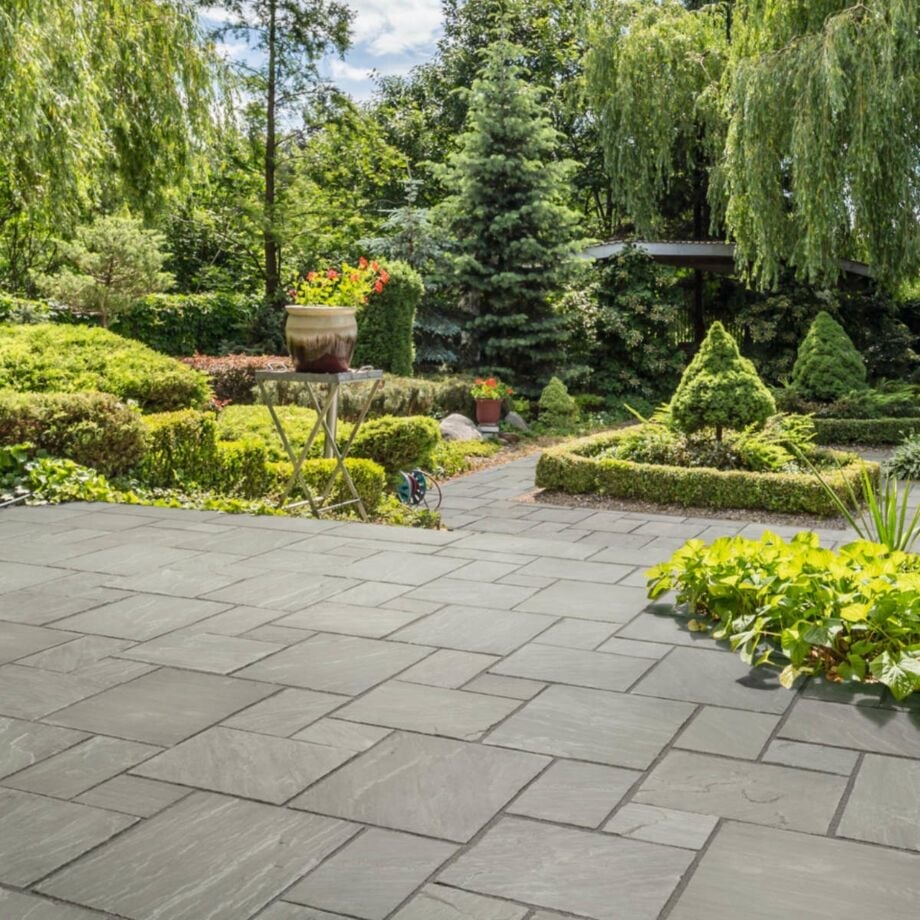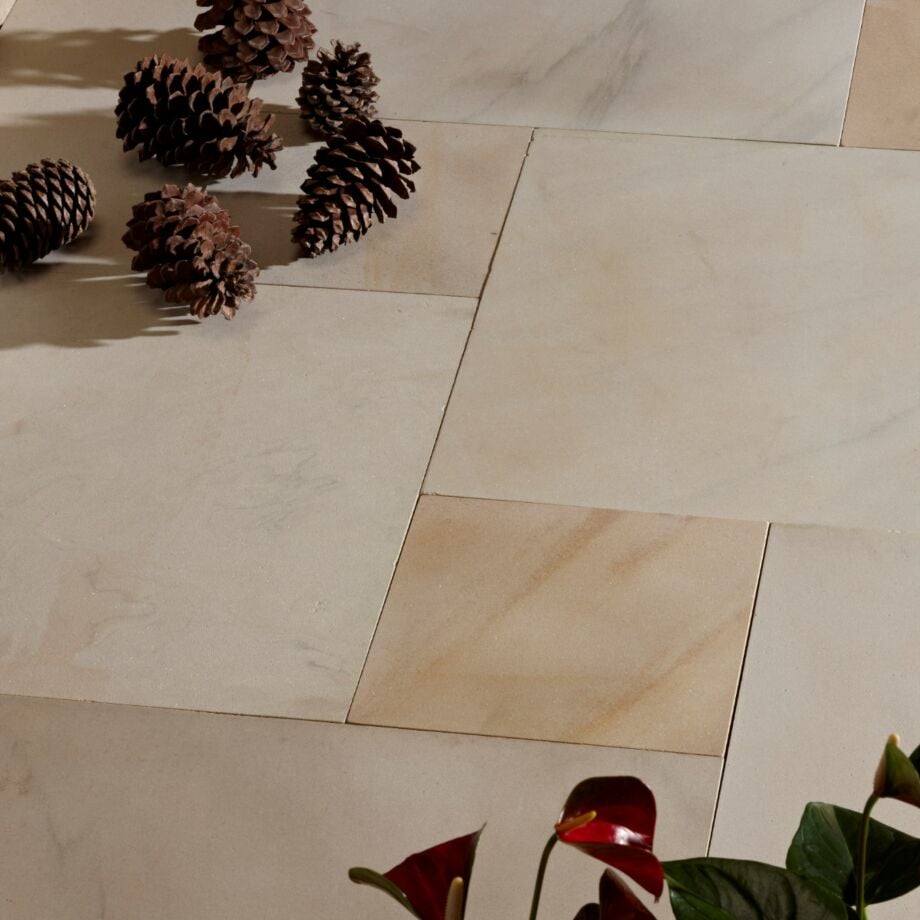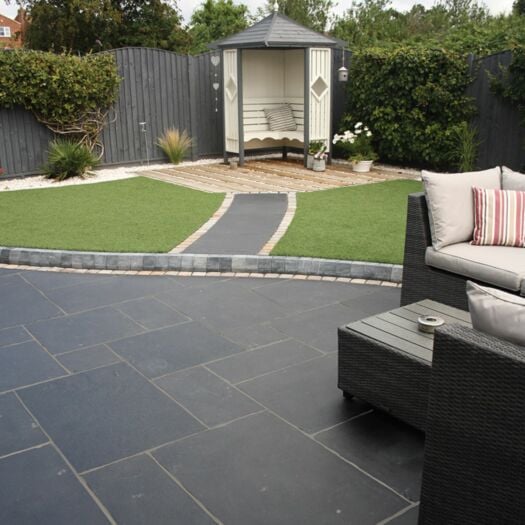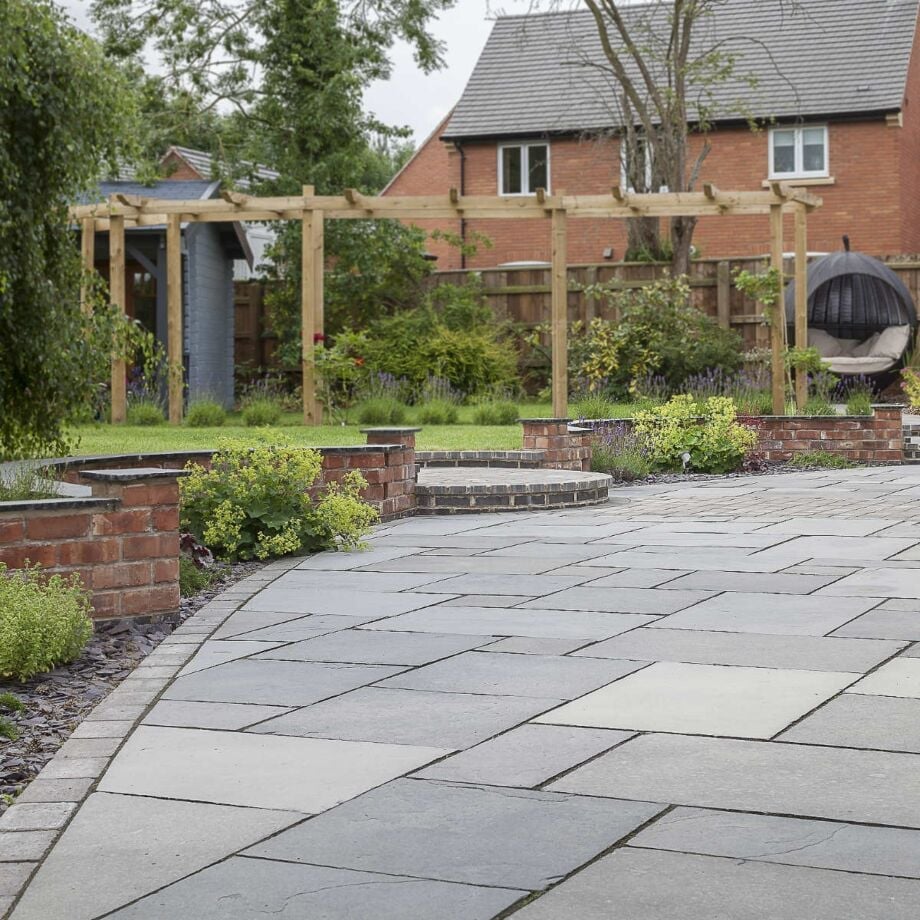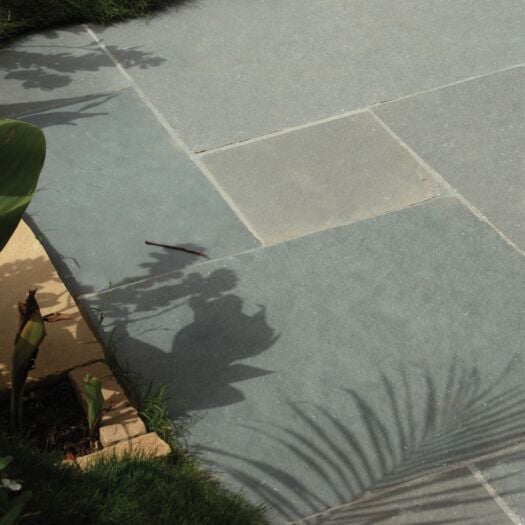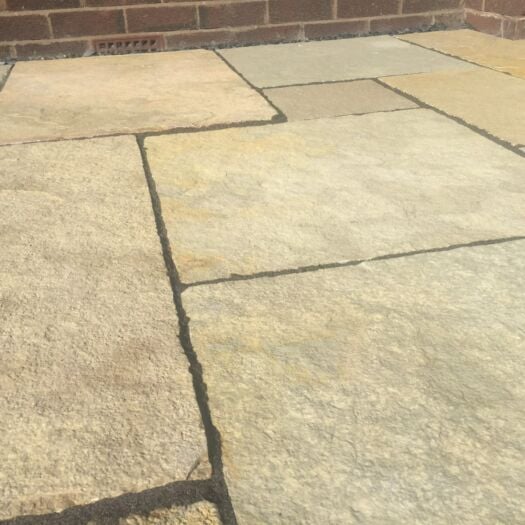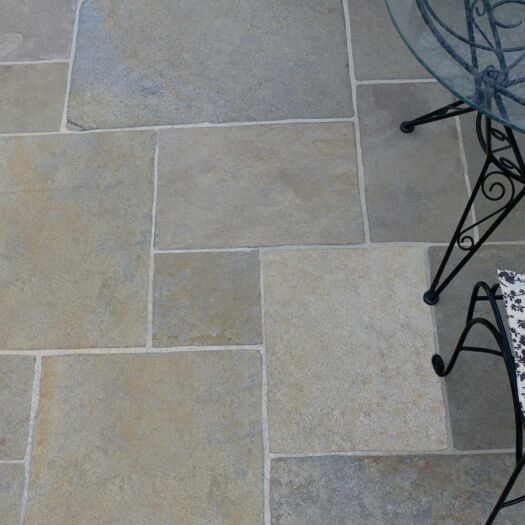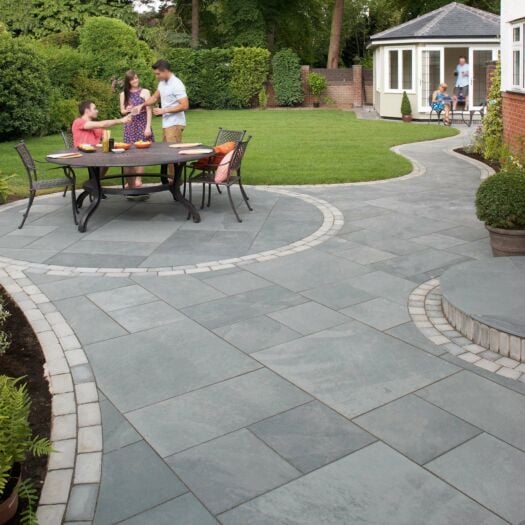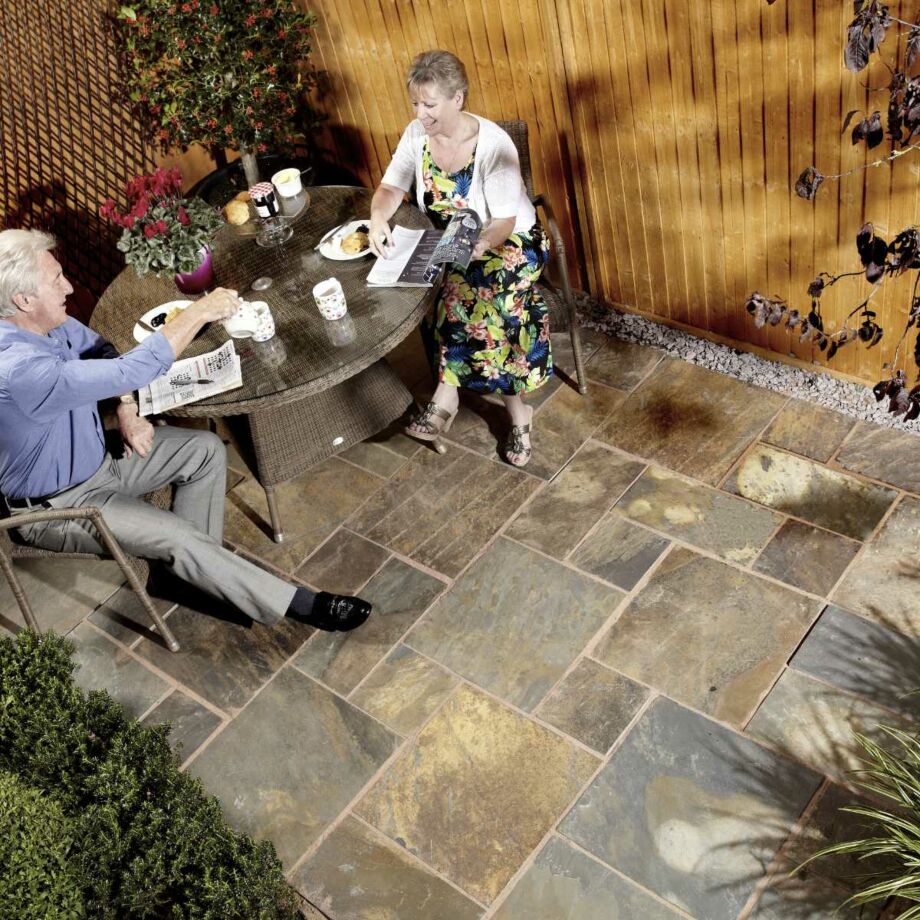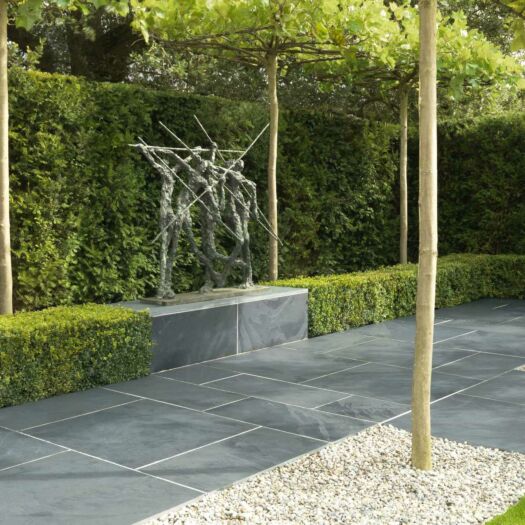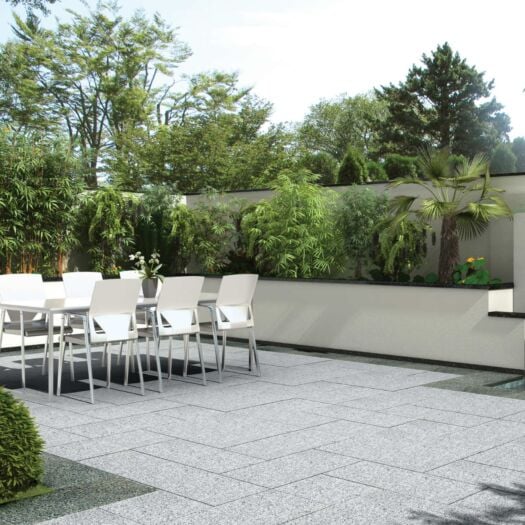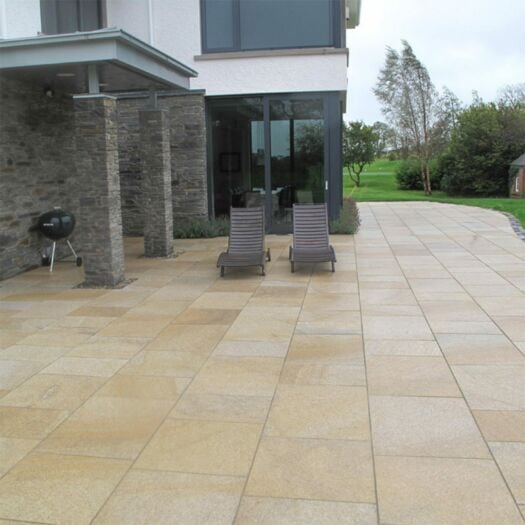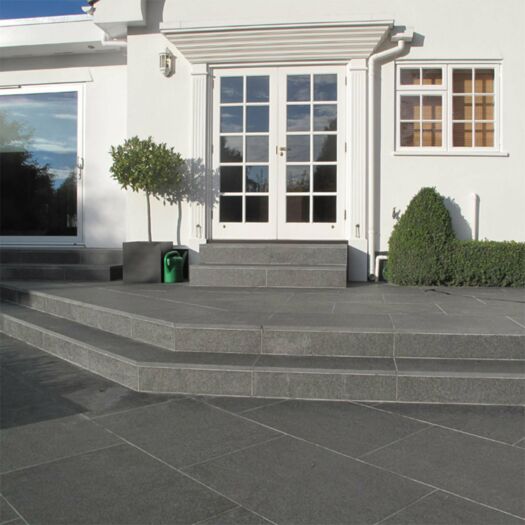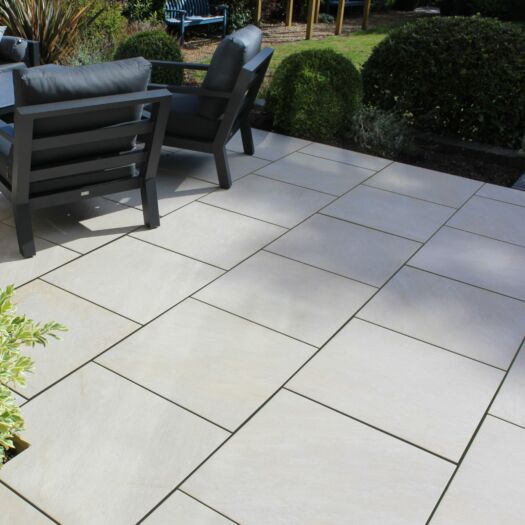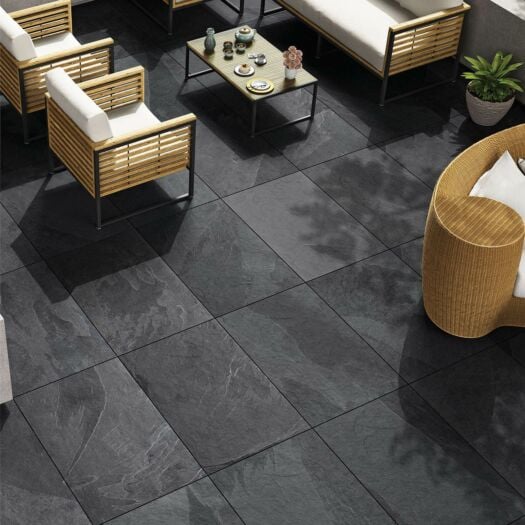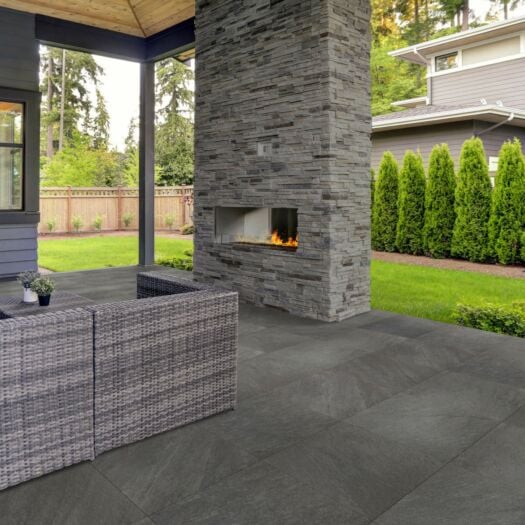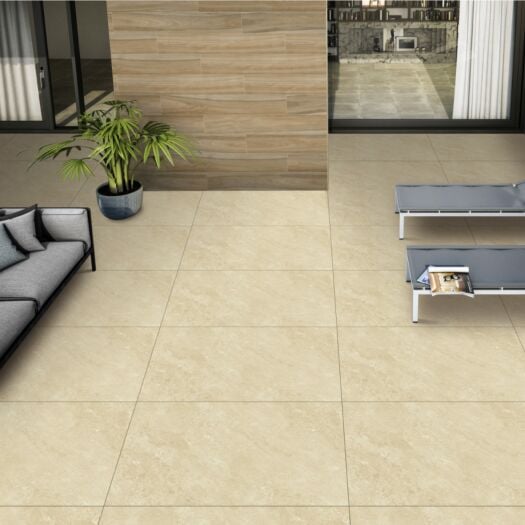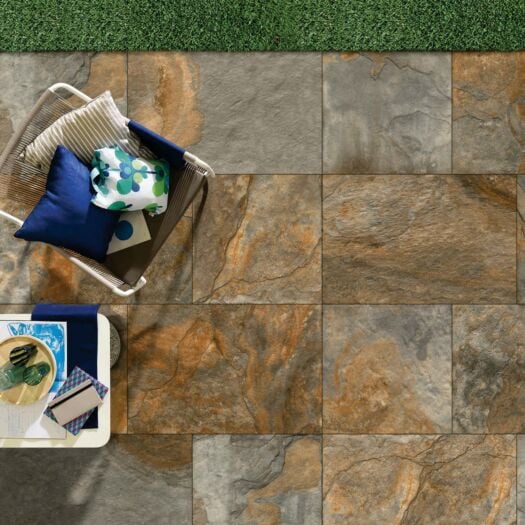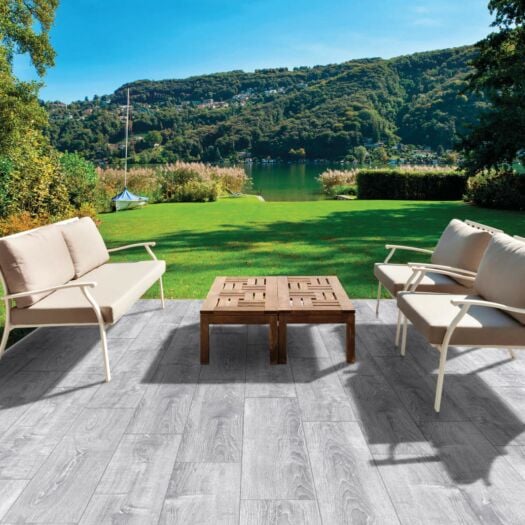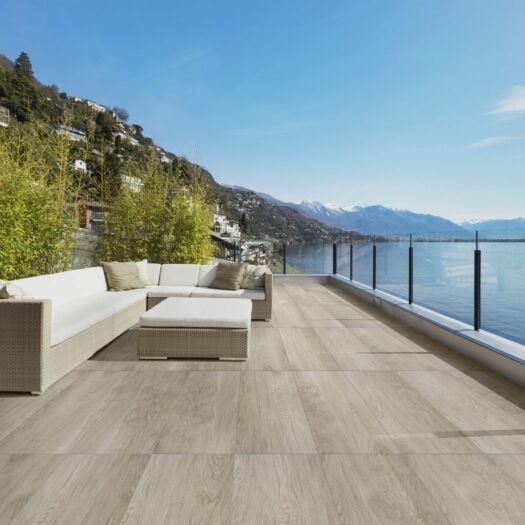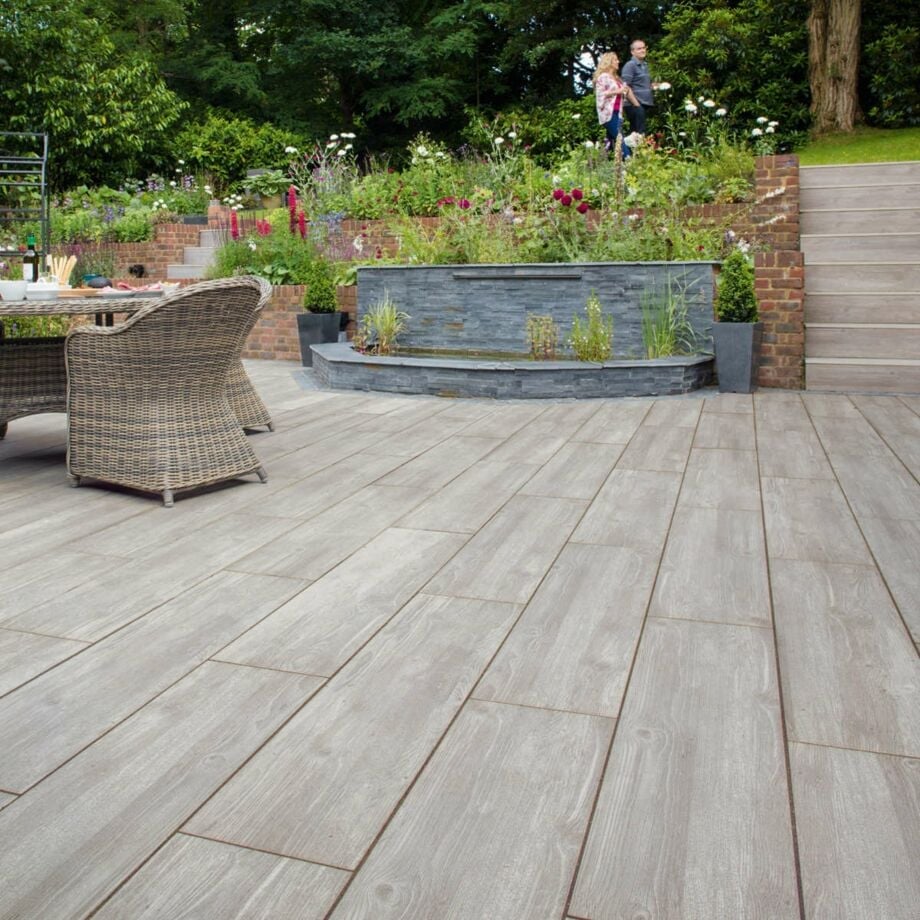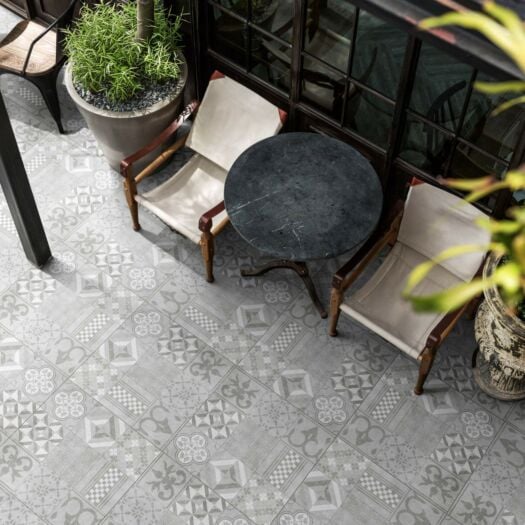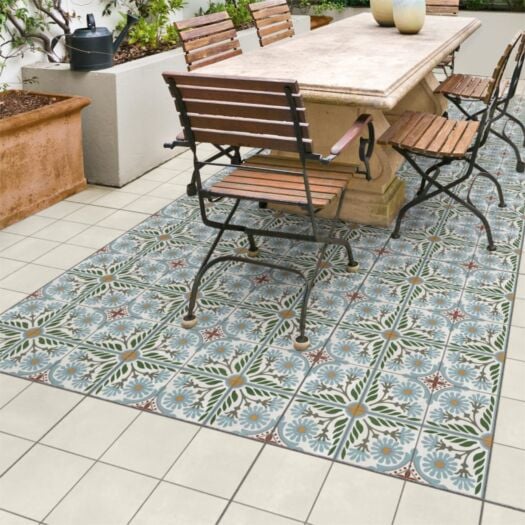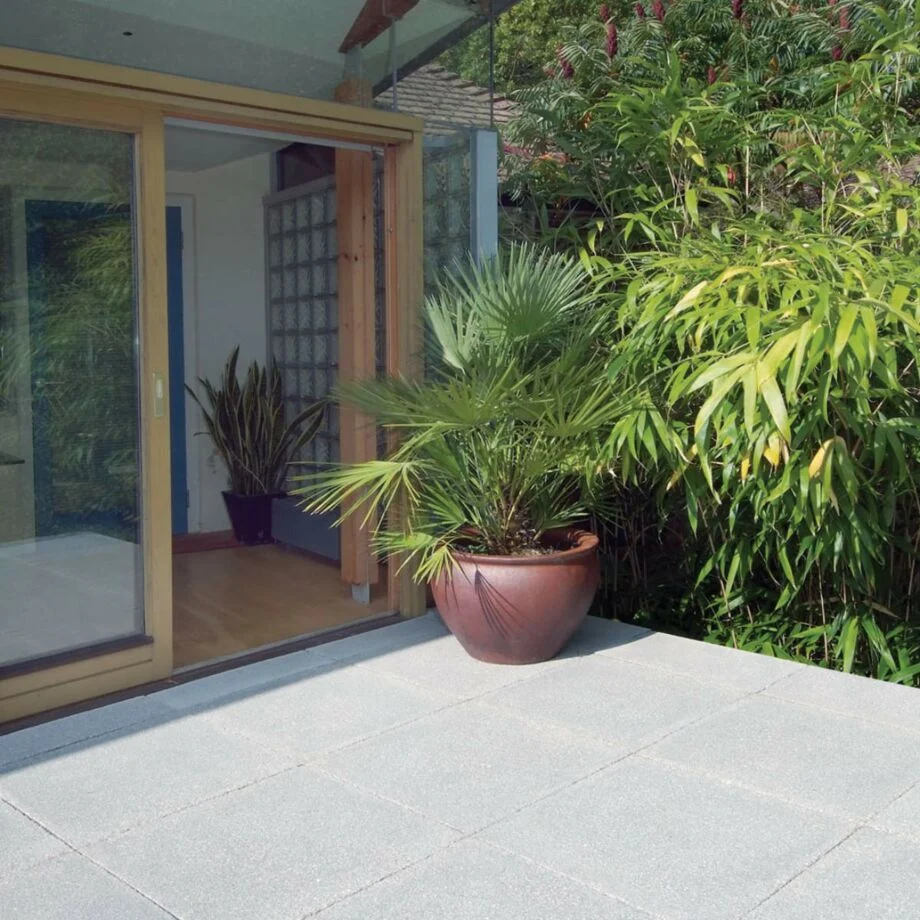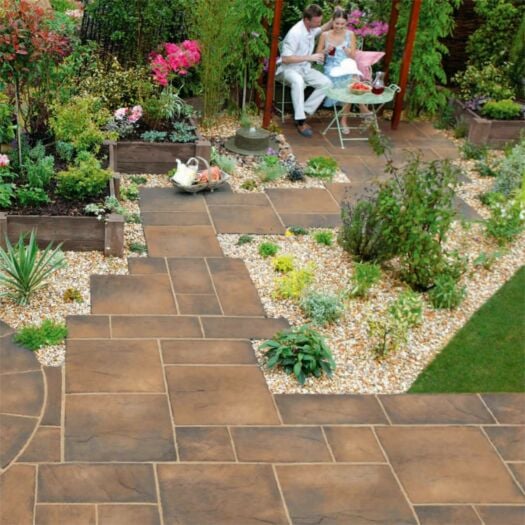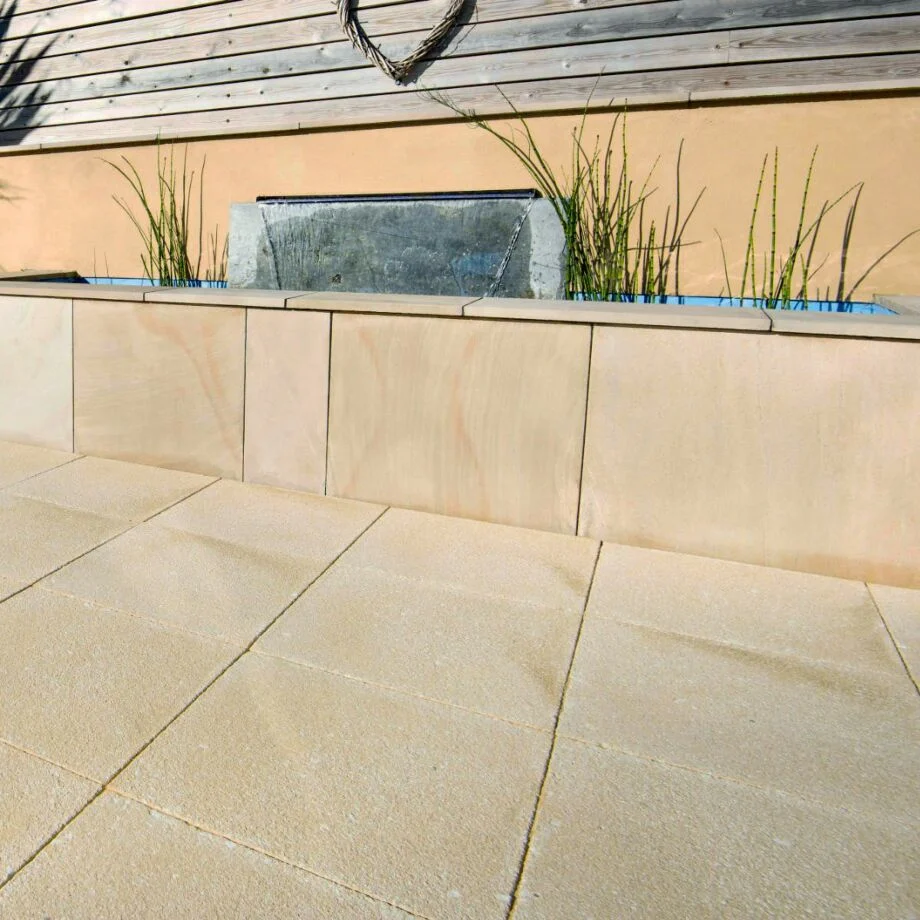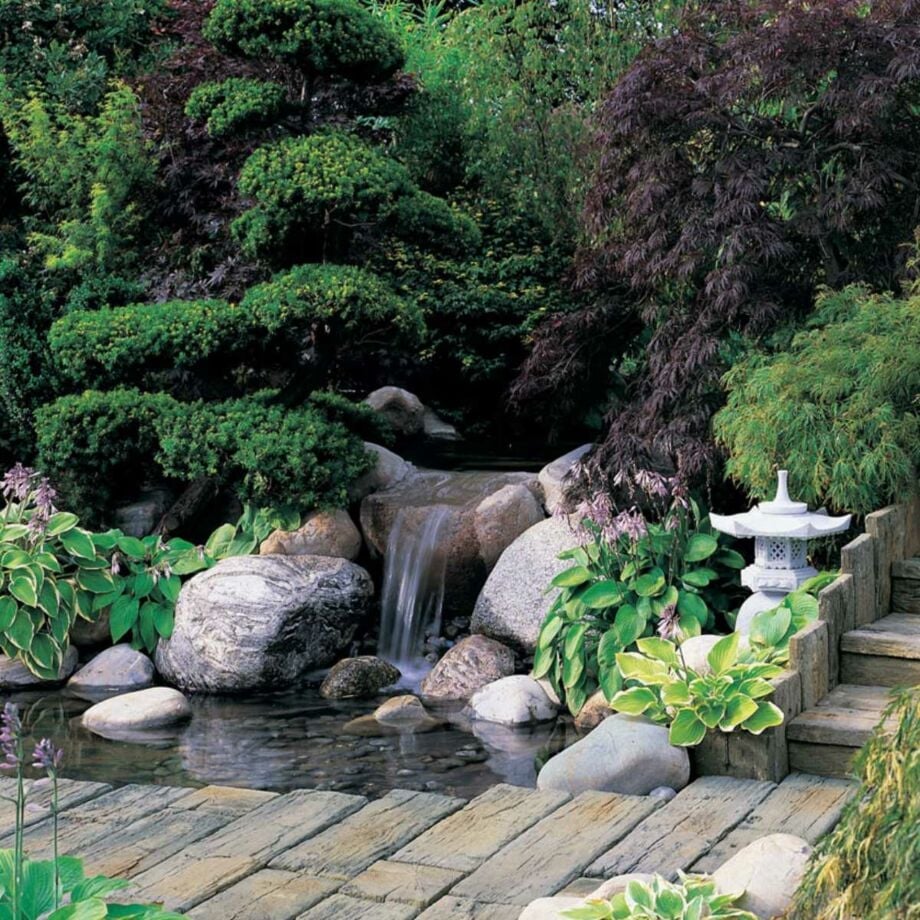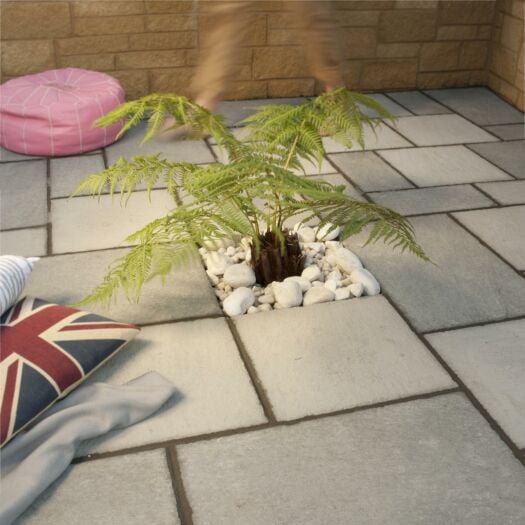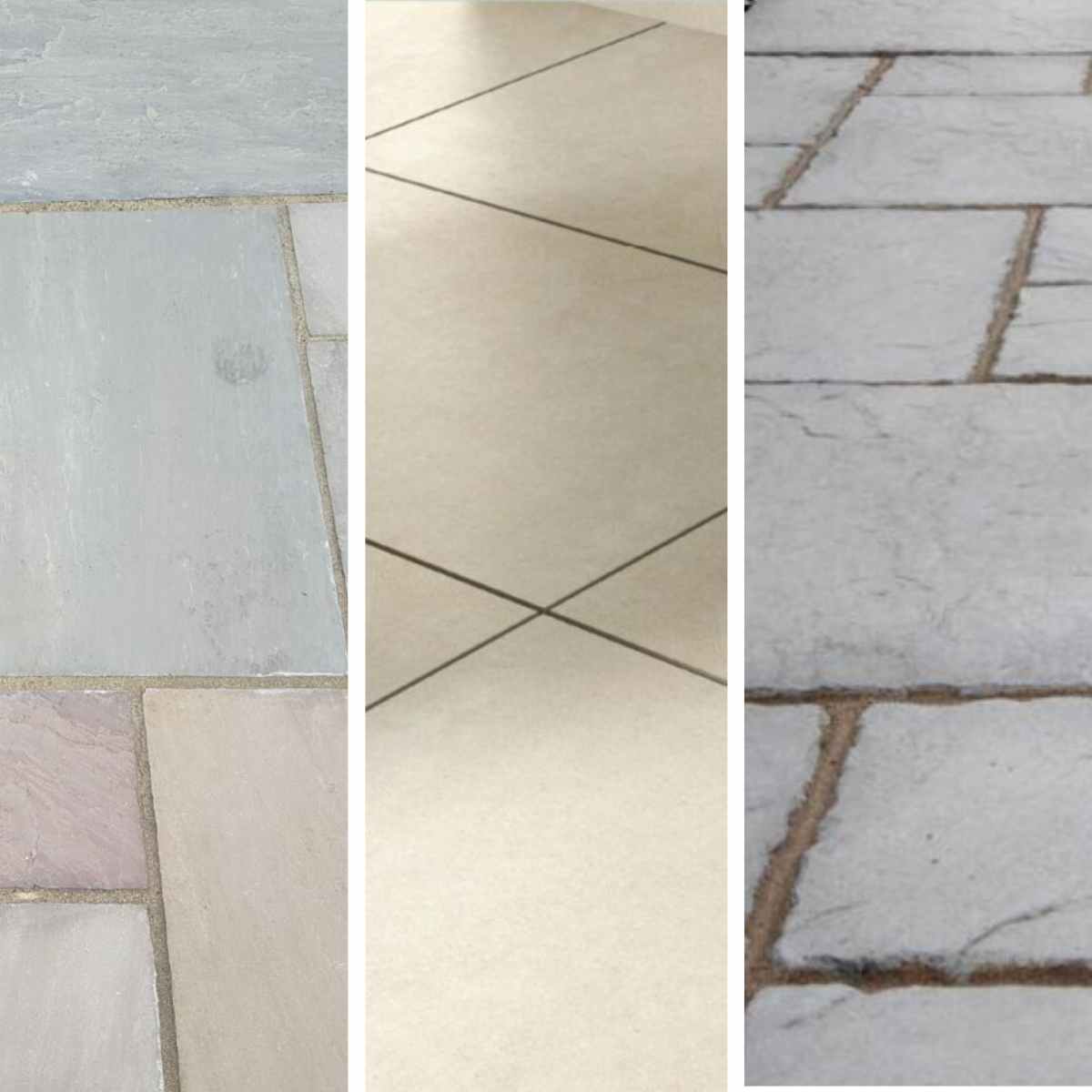
When it comes to creating a beautiful and durable outdoor space, choosing the right paving material is crucial. Natural stone, porcelain, and concrete are three popular options, each with its own unique characteristics and benefits. In this article, we will explore the differences, features, and benefits of these materials to help you make an informed decision for your next paving project.
Natural Stone Paving:
Natural stone paving offers timeless elegance and a natural charm that is hard to replicate. One of the main advantages of natural stone is its durability with it being much stronger than concrete at a thinner depth. It can withstand heavy foot traffic and extreme weather conditions, making it suitable for various outdoor applications. Additionally, the individuality of each stone adds character and uniqueness to your space.
There are various types of natural stone available for paving, including sandstone, limestone, granite and slate. Here's a rundown of the key features of each:
a. Sandstone Paving: Sandstone paving is renowned for its blend of colours, natural textures, and rustic charm. It is formed from layers of compressed sand and minerals, resulting in a durable and visually appealing material. Sandstone offers a visually softer and more organic look compared to many other natural stones.
Key features of sandstone paving include:
i. Colour options: Sandstone comes in a range of beautiful earthy tones, including Raj Green, Mint Fossil, Autumn Brown, and Kandla Grey. Sometimes, sandstone paving products are known by these names, whereas in other cases, especially when purchasing leading brands of paving (that have been tested for quality and guarantee purposes), they are renamed by the brands to a unique name to that brand. These colours can complement both traditional and contemporary outdoor designs.
ii. Textured surface: Sandstone is characterised by its various textured surface options, providing a natural and slip-resistant finish. Choices range between a natural handsplit / riven surface which are great value and suit many styles of home, through to more specialist finishes such as honed (flat and smooth to the touch), sandblasted (flat and rough to the touch), flamed (softly rippled) and tumbled (softened edges and surface to give an aged appearance). This makes it an excellent choice for areas such as patios, pathways, and pool surrounds for a wide range of property styles.
iii. Versatility: Sandstone can be cut into various sizes and shapes, allowing for creative and unique design possibilities. It can be used to create intricate patterns or laid in a random layout for a more organic feel. It's also available in a wide range of product types such as paving slabs, cobble setts, driveway paving, block paving and other features such as circle kits and bullnose step treads.
Pros of sandstone paving:
- Warm and natural colour options with many choices
- Textured surface options for improved slip resistance and choice of styles
- Durable and suitable for outdoor use
- Versatile and can be customised for different design preferences
- Natural riven finish sandstone is one of the best value paving options
Cons of sandstone paving:
- Lighter colours are more prone to algae
- Natural colour variations can be inconsistent and sometimes there is either too much/ too little colour choice compared to expectations
- Natural characteristics and markings may not be to everyone's tastes
b. Limestone Paving: Limestone paving offers a subtle and elegant appearance, with a gently undulating surface and light 'orange-peel' texture. It is composed of sedimentary rock formed over millions of years, resulting in a durable and visually pleasing material. Limestone is often chosen for its distinctive colour palette and versatility.
Key features of limestone paving include:
i. Colour range: Limestone is available in a specific range of colours, including buttermilk beige (similar to Cotswold stone colours), grey, blue-grey and dark velvety grey that lightens to mid grey in sunlight. This allows for flexibility in creating both neutral and bold outdoor designs.
ii. Relatively flat surface: Limestone is known for its relatively flat surface with a gently undulating surface, adding a touch of sophistication to any outdoor space. It offers similar qualities to sandsotne, but has a flatter surface and less colour variation.
iii. Thermal properties: Limestone has excellent thermal conductivity, meaning it stays cool in hot weather, making it comfortable to walk on barefoot. This makes it an ideal choice for pool areas or outdoor spaces during warmer weather.
Pros of limestone paving:
- Versatile appeareance suited to modern and traditional designs
- Specific range of colour options to suit different design styles
- Excellent thermal properties for comfort in hot weather
- Good value
Cons of limestone paving:
- Black limestone regular sealing and tinting to retain the dark colour
- May be more susceptible to scratching compared to harder stones like granite
c. Slate Paving: Slate paving is known for its distinctive layered structure, rich grey colour palette, and unique textures. It is a metamorphic rock formed from shale or clay, resulting in a durable and visually striking material. Slate offers a natural and contemporary look that can add character to any outdoor space.
Key features of slate paving include:
i. Colour choice: Slate is available in a choice of grey tones, ranging from deep blacks and greys to earthy greens, blues-grey, and rustic bronze tones. This allows for striking and visually interesting designs that can complement a variety of architectural styles.
ii. Texture and natural cleft: Slate is known for its unique texture and natural cleft, created by splitting along the layers of the rock. This distinctive feature adds depth and character to the surface, giving it a rustic and organic feel, yet due to its classic appearance, it works well in both contemporary and traditional gardens.
iii. Weather resistance: Slate is highly resistant to weathering, making it a perfect choice where limited maintenance is required.
Pros of slate paving:
- Unique and striking appearance: Slate paving offers a distinctive and visually appealing look with its layered structure, rich colours, and unique textures. It adds character and depth to outdoor spaces, making them visually captivating.
- Natural cleft and texture: The natural cleft surface of slate creates a textured finish that adds to its aesthetic appeal. The textured surface enhances slip resistance and provides a rustic and organic feel to the paved area.
- Durability: Slate is a durable material that can withstand heavy foot traffic, making it suitable for high-traffic areas like walkways and patios. It is resistant to cracking, chipping, and fading, ensuring its longevity.
- Weather resistance: Slate is highly resistant to weathering, making it ideal for outdoor paving. It can withstand extreme temperatures, moisture, and UV rays without losing its colour or structural integrity.
Cons of slate paving:
- Maintenance requirements: While slate is relatively low-maintenance, it does require some care to keep it in optimal condition. Regular cleaning and sealing are necessary to prevent the appearance becoming matte over time - especially if rich, more satin tones are desirable.
- Susceptibility to scratching: While slate is durable, it is more prone to scratching compared to harder stones like granite. Care must be taken to avoid dragging heavy objects or using abrasive materials that could scratch the surface.
- Limited availability of large-format slabs: Finding large-format slate slabs can be challenging.
A question we are often asked is 'what is the difference between Indian and Brazilian slate paving?' - In terms of quality and durability, there is no real difference between the two, however visually, Brazilian slate has a flatter surface finish than Indian slate which is more riven in texture.
d. Granite Paving: Granite paving is widely recognised for its strength, durability, and timeless beauty. It is an igneous rock formed from volcanic activity, resulting in a dense and resilient material. Granite is a popular choice for outdoor paving due to its ability to withstand heavy foot traffic and harsh weather conditions.
Key features of granite paving include:
i. Strength and durability: Granite is renowned for its exceptional strength, making it highly resistant to cracking, chipping, and wear. It can withstand heavy loads and is an excellent choice for driveways, walkways, and commercial spaces. Its flat surface paving slabs are textured with a slip-resistant surface for practicality and contemporary styling.
ii. Wide colour range: Granite comes in a diverse range of colours, allowing for versatile design options. Popular granite colors include G654 (dark grey), G603 (light grey), and Giallo Veneziano (yellow). This variety enables you to select a colour that complements your outdoor aesthetic. Granite colours are formed with a multitude of flecks of colour so although a product is known as silver grey for example, this will be formed of silver, white, grey and black, but en masse, the overall appearance is silver grey.
iii. Stain and scratch resistance: Granite has a low porosity, making it highly resistant to stains and scratches. This quality makes it suitable for areas where spills are common, such as outdoor dining areas or barbeque spaces. Sealing the paving is always a good idea around a barbecue.
iv. Weather resistance: Granite is highly resistant to the elements, including UV rays, extreme temperatures, and moisture. It does not fade or deteriorate easily, making it ideal for outdoor applications in various climates. It's available in a choice of products such as paving slabs, cobble setts and driveway paving as testament to its practicality.
Pros of granite paving:
- Exceptional durability and resistance to wear and tear
- Wide range of colour options to suit different design preferences
- Low maintenance requirements
- Resistant to staining, scratching, and fading
- Slip resistant
Cons of granite paving:
- Higher initial cost compared to some other natural stone options
- Limited colour choice
Porcelain Paving:
Porcelain paving (also known as vitrified paving) has gained popularity in recent years due to its exceptional durability and low maintenance requirements. Made from compressed and fired clay, porcelain offers a wide range of benefits for outdoor spaces. It is available in various colors, textures, and patterns, providing versatility and design options.
Key features of porcelain paving include:
i. Strength and durability: Porcelain is highly resistant to scratches, stains, and fading. It is also less prone to cracking and chipping, making it suitable for areas with heavy use or harsh climates.
ii. Low maintenance: Porcelain paving requires minimal maintenance compared to natural stone. Its non-porous surface makes it resistant to water absorption and staining, and it can be easily cleaned with mild detergents.
iii. Colour consistency: Unlike natural stone, porcelain paving offers consistent colour and pattern throughout the entire batch, ensuring a uniform appearance for your outdoor space.
Popular types of porcelain paving include:
- Wood effect porcelain: Perfect for those who desire the warm and natural appearance of wood but want the durability and low maintenance of porcelain. Wood effect porcelain comes in various shades and textures, including oak, walnut, and teak.
- Mosaic patterned porcelain: This type of porcelain has the appearance of mosaic tiles and works well as a feature section within a larger area or gardens following a Moroccan or Mediterranean theme.
- Natural stone effect porcelain: Many types of porcelain paving resemble natural stone paving and benefit from good qualities of the stone and stylish features without the upkeep of some of the natural characteristics that are occasionally seen as less desirable.
Pros of porcelain paving:
- Excellent durability and resistance to scratches, stains, and fading making even light colours a practical choice
- Low maintenance requirements
- Wide variety of colours, patterns, and textures available
- Uniform appearance within a batch
- Good value for certain sizes such as 600x600mm
- Slip resistant
Cons of porcelain paving:
- Higher initial cost compared to concrete or some natural stone options on larger slab sizes
- May require professional installation due to its specific cutting and installation methods
Concrete Paving:
Concrete paving is a traditional and widely used option that offers both functionality and aesthetic appeal. It is made by mixing cement, aggregates, and water, resulting in a solid and durable surface. Concrete can be customised with various finishes, colours, and patterns, making it suitable for a wide range of design styles.
Here are some key features of concrete paving:
i. Customisability: Concrete can be shaped and moulded into various sizes, shapes, and textures to suit different design preferences. It can be stamped, stained, or moulded to create unique patterns and effects.
ii. Affordability: Concrete is sometimes more cost-effective compared to natural stone or porcelain, but more often than not, this will only be very basic concrete - natural stone and porcelain paving are generally better value.
iii. Ease of installation: Concrete paving is relatively easy to install, making it a popular choice for DIY projects. However, professional installation is recommended for larger or more complex areas to ensure proper leveling and longevity.
Popular types of concrete paving include:
- Exposed aggregate concrete: This type of concrete showcases the natural texture and colour of the aggregates (such as small grit or gravel) mixed into the surface. It provides a decorative and slip-resistant finish, and is less prone to fading than dyed concrete.
- Wet pour: This type of concrete paving is poured into a moulded that is gently vibrated to remove air bubbles. The moulds enable a wide range of styles and finishes to be created
- Pressed slabs: Pressed concrete paving are formed when a semi dry mixture is pressed into a slab shape. This is unlikley to be as ornamental as wet pour concrete paving and more likley to be used for utility purposes.
Pros of concrete paving:
- Versatility in design options, including colours, patterns, and textures
- Durable and suitable for high-traffic areas
- Relatively easy installation, especially for smaller projects or DIY enthusiasts
Cons of concrete paving:
- Susceptible to cracking over time, especially in areas with freeze-thaw cycles or heavy loads
- More expensive that natural stone and porcelain paving
- Dyed concrete slabs which are often the more economically priced options, will fade over time
- Thicker paving is necessary to compete with the strength of thinner natural stone and porcelain options
Conclusion
In conclusion, choosing the right paving material depends on your specific needs, preferences, and budget. Natural stone offers timeless beauty and durability, with options such as granite, sandstone, slate and limestone. Porcelain provides exceptional strength, low maintenance, and a wide variety of design options. Concrete is versatile and customisable, yet more costly than other options.
Consider factors such as the desired aesthetic, durability requirements, maintenance preferences, and budget when making your decision. It may also be helpful to consult with a professional or ask Paving Superstore for samples to see and feel the materials firsthand. With careful consideration, you can select the perfect paving material to enhance the beauty and functionality of your outdoor space for many years.
This guide is designed as an overview of a few of the most popular types of paving slab materials to help you consider alternative options to traditional concrete paving. We hope you have found it useful, however should you like further information on paving materials, styles and uses, please call us on 0800 002 9910

